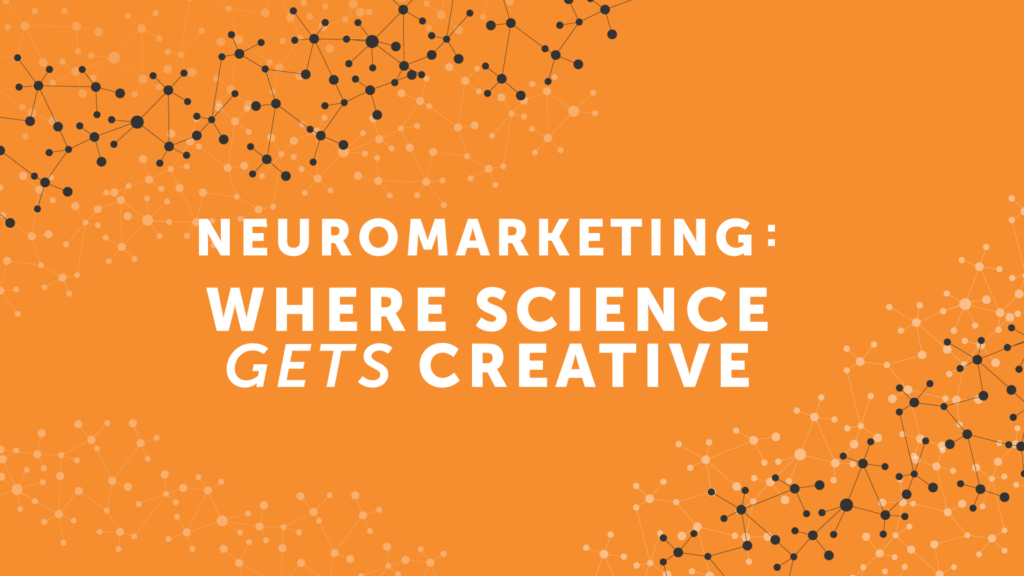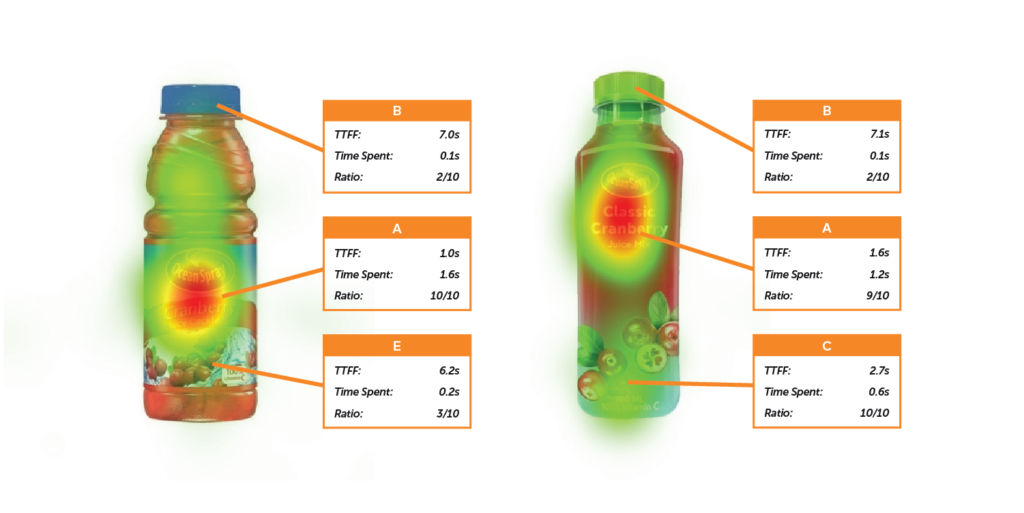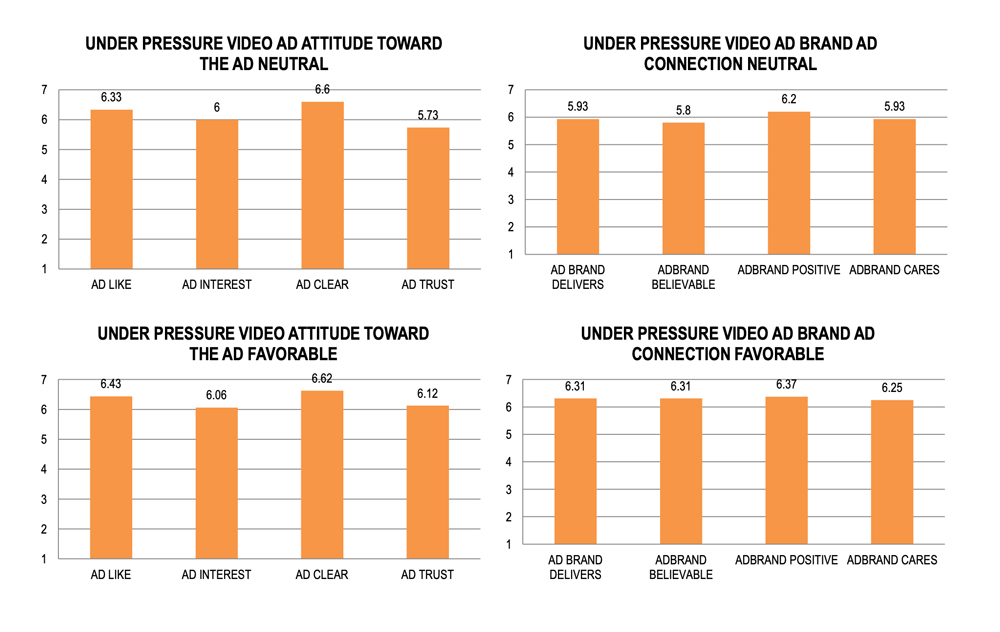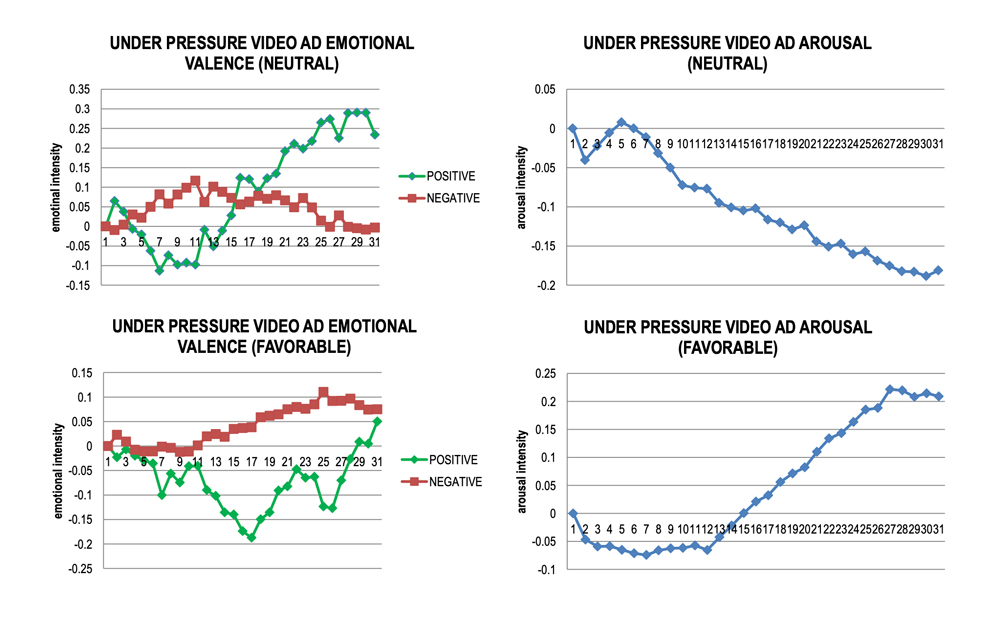
Test content before wasting money on production and distribution
Understand why your strategies work, instead of whether they work
Get unbiased, reliable, and generalizable results from data-driven insights
Create a second-by-second analysis of attention, engagement, and emotional valence
Is your advertising doing its job?
Most businesses have a lot riding on their public communication, from ads to websites to social media. But marketers don’t know if their materials are really engaging their target audiences, no matter how much market research they do—because people cannot tell them.
Why? Because much of our buying (attending, voting, liking, etc.) motivation is subconscious. Human behavior is often driven by emotional drivers functioning at a subconscious level that traditional market research simply cannot measure.
Enter Neuromarketing
Advances in neuroscience have given us a better way to understand what happens when people consume media. The application of neuroscience to marketing led to the birth of neuromarketing. Early research was often done with fMRIs, functional magnetic resonance imaging, that measured changes in brain activity by measuring blood flow.
This process led to many breakthroughs in understanding but, from a practical point of view, was expensive and clumsy. Most people didn’t take in TV, film, print or browse the internet with an expensive magnet around their heads.

Biometric Research
Biometric research is a new development in neuromarketing that focuses on biological responses to media. These responses open the window to how ads—your ads—websites or any other media are influencing people. In short, the body tells us what’s going on in the brain. When evaluating media with biometric research we can evaluate:
- What people see—and what excites and draws their attention
- Whether people are emotionally engaged by your media—and if so, whether they are positively engaged, negatively engaged, or both
- Whether they are taking in your message
- Their level of arousal, the key indicator of likelihood to act
Biometric research is paired with traditional market research so that we can integrate “self-report,” which creates a framework for trustworthiness and credibility, with key indicators of subconscious emotional response.
And that’s when things get interesting. In fact, that’s where you find out if your ads (websites, packaging, social media messages) are working or not. And if not, we will roll up our sleeves to help you get your ads back on track.


We measure four indicators of biometric response.

Eye Tracking
Using a remote infrared eye tracker, we measure visual attention and arousal that tells what a person sees, or is drawn to by visual stimuli. We can also tell the level of excitement indicated by involuntary changes in pupil dilation.

Skin Conductance
A measure of arousal. Using a remote wrist band that measures galvanic skin response (GSR) we measure skin conductance, a measure of the intensity of sympathetic nervous system activity that occurs when an individual observes media.

Facial Recognition
Using a webcam, we measure the movement of facial muscles which indicate positive and negative emotional responses, or lack of emotional engagement.

Heart Rate
A measure of attention. Using a remote wrist band, we measure attention and whether the message is being encoded, that is, whether the message is being taken in.
